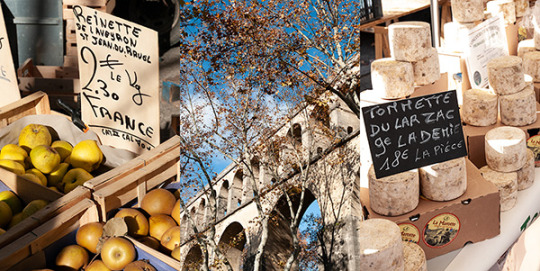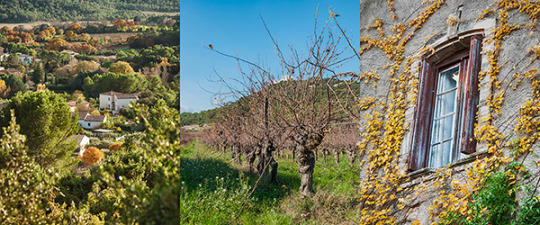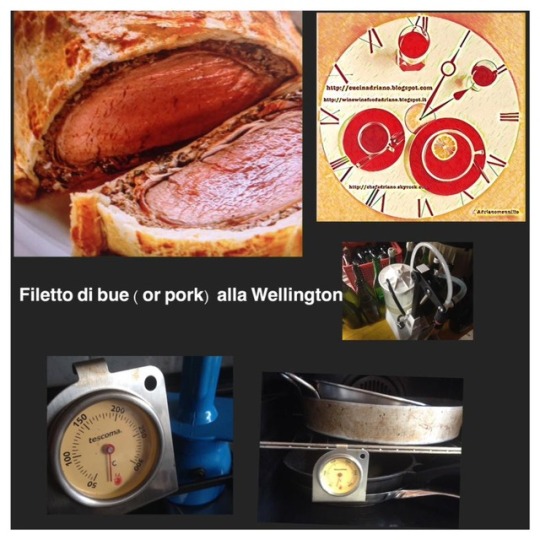#Salers Sausages
Text
Grilled Salers Sausages

Sometimes --often!-- when you have good products, cooking them is easy! They don’t need a lot of help, and they must shine; thus it mostly all comes down to cooking them (should they need to be cooked!) Like these beautiful Grilled Salers Sausages, which we bought at the butcher’s shop in Murol. Every time we take the winding roads up and down the mountains, we drive past these placid (Salers) cows, with their gorgeous auburn fur and bells round their neck. And they make excellent, tasty meat!
Ingredients (serves 2):
2 (185-gram/6.5-ounce) Salers sausages (or other very good beef sausages, made with the meat of the cows grazing green pastures in your neck of the woods!)
a drizzle of olive oil
Heat a large pan or griddle pan over a high flame. Drizzle olive oil over the Salers sausages, and rub them gently.
Add sausages to the griddle pan, and cook, about 3 minutes on each side, until cooked through and well-browned, reducing the heat to medium half-way through (about 12 minutes in total).
Serve Grilled Salers Sausages hot, with pasta and lettuce.

The high street in Murol, Auvergne, France (1st May, 2023)
#Recipe#Food#Grilled Salers Sausages#Grilled Salers Sausage recipe#Salers Sausages#Beef Sausages#Beef#Beef and Steak#Sausages#Salers#Salers Cows#Olive Oil#Easy recipe#Quick recipe#5 Ingredients or Less#French Cuisine#Regional Cuisine#Auvergnat Cuisine#Murol#Puy-de-Dôme#Bleu d'Auvergne#France
0 notes
Text
Yorkshire Provenance and French Terroir
There’s a strong sense of pride, heritage and provenance here in Yorkshire. Provenance matters and can mean many different things to us be it ethics, environmental concerns or traceability. But what about ‘terroir’?
During my visit to Montpellier and the Occitania region of France last December, I felt a strong sense of provenance particularly in the markets. It was apparent that there was an underlying awareness and knowledge of where a particular ingredient came from be it the meat, vegetables, cheese or wine, everything is traceable. And in the restaurants strong evidence of locally sourcing therefore cutting down on the food miles and championing the produce of the regions. At the restaurant ‘Contrat’, for example, in Montpellier, I was served veal sausage from Rieupeyroux in Aveyron plated with Laguiole, a cow’s milk cheese from the plateau of Aubrac also in Aveyron with a well matched dry white wine – Mas d’Agalis – Le Grand Carré 2016 from Languedoc-Roussillon. The French have an understanding of the characteristics of each ingredient, where it comes from and how to combine them and certainly how to match those wines to enhance the food in an almost symbiotic way. Beyond provenance is ‘terroir’ which translates literally to the land – the earth or soil – the habitat. French wine production is an obvious example where terroir has a significant part to play in the resulting characteristics of the wine dependent on the vines, the soil, climate, cultivation and even lunar cycles.

All food in France it seems is affected and governed by terroir and ultimately this affects the resulting flavour. Lamb, for example, from Aveyron, located in the north of the Occitanie region in southern France, has a grassy and herbaceous flavour indicative of the terroir, i.e. the pastures where the sheep graze. We don’t have the warm climate that the south of France has here in the UK in which to produce great red wine, but Leventhorpe Vineyard located in Woodlesford, Leeds produce some excellent whites. The way in which cheese is produced in France is also indicative of the region where it comes from, like Salers, a semi-hard cow’s milk cheese produced in the mountains of Auvergne in central France. Salers are a breed of cattle which originated in Cantal in the Massif Central of France. Salers has a wonderful bittersweet flavour starting out slightly bitter then ending with a sweet and tangy finish that lingers on the tongue. I also tried La Marotte at Le Marché des Arceaux in Montpellier, La Marotte is a tomme style ewe’s milk cheese from the Larzac matured for up to 12 months in natural caves. The flavour is medium/strong, nutty and earthy.
Elsewhere in Yorkshire, there are companies like Farmison, an online retailer based in Ripon who champion the heritage breeds of the British Isles sourcing directly from the farms, they even give tasting notes of the meat they sell. And there are now over 750 different cheeses produced in Britain overtaking France. As a Yorkshireman I may be biased in singing the praises of my home county, but the 24-month aged Comté I tasted at Les Halles Laissac in Montpellier was on another level. I had to bring some home with me. The French are renowned for their gastronomy and rightly so, but we have a lot to be thankful for here in the UK too, let us go beyond provenance and fully embrace our own terroir, adopt more of the French attitude and sophistication towards food and appreciation of where it comes from. Plan a trip to Montpellier and experience the same sense of enlightenment that I had. Take a day trip exploring the wine, the terroir, the gastronomy and everything in between with Bertrand Bosc who took me on a tour of the Pic-Saint-Loup and a visit to Château La Roque, a historic wine estate about 12 miles north of Montpellier. Bon Appétit!

1 note
·
View note
Photo

Filetto di bue alla Wellington ( o maiale )_ ingredienti e dosi :: 1 filetto di manzo di 800 gr- 1/2 bicchiere di cognac ( o vino rosso piemontese ) -150 /200 gr di funghi champignons ( una volta cotti , li passate nel frullatore ) oppure 10 cucchiai di purè di champignon freschi - poco burro - sale e pepe - 10/12 fette di prosciutto di Parma ( crudo ) - senape - poco olio d'oliva- 1/2 tuorli ��sbattuti _Method_ Pulite il filetto , salare e pepare da ambo i lati e lasciatelo riposare per 10/12 minuti , poi in una padella già calda , fate rosolare il filetto nel burro e poco olio d'oliva , giratelo e dopo bagnatelo con il cognac ( io preferisco vino rosso ) , fate evaporare e toglietelo dal fuoco , intanto avete già cotto i funghi a parte e non tutti passati come una purea nel mixer ( molti miei colleghi cuochi usano le castagne cotte ) a questo punto accendere il forno a 170°C , poi stendere le fette di prosciutto crudo , spalmate a piacere la senape , poi cospargere con un cucchiaio la crema di funghi ( oggi esiste già preparato ) e la metà dei funghi tritati ).A questo punto stendere la pasta sfoglia e coprite il tutto il filetto , chiudere bene e spennellate con i rossi d'uova ( nò freddi da frigo ) punzecchiate con uno studdicadenti ( forchetta ) vari lati , una volta che il forno è caldo , mettetelo a cuocere in una padella per 20/24 minuti a seconda come volete la carne ( se ben cotta o al sangue ) , io da chef de rang l'ho servito ( va tagliato davanti al cliente ) .
****** consil du chefAdrianomennillo : il filetto può essere anche di maiale , quindi la cottura diminuisce , mi raccomando se usate il forno da casa usate l'orologio ( vedi la mia foto ) temprato a parte , oppure aumentate di 8 minuti il timer incorporato nel forno e la temperatura a 180°C , ah dimendicavo ... se avete una data da ricordare , un amore ... prima di mettere il filetto in forno , con un stuzzicadenti ( o altro ) incidete sulla crosta , LA VOSTRA DATA da ricordare o Nome , una volta cotto il tutto , ****** una grande soddisfazione per voi.
>>>>>>>>>>>>>>>>>>>>>>>>>>>> 4 recipes to wellington >>>>>>>
2 ) Filetto alla Wellington : 1 kg beef fillet -100 ml olive oil - 300 gr brown mushrooms - 60/70 gr butter -1 sprig rosemary - 1 sprig thyme - 100 ml chardonnay wine -12 slices thinly sliced bacon -12 slices thinly sliced ham -500 gr puff pastry, thawed -Handful of flour, for dusting - 2 egg yolks - 1 teaspoon cream.FATE COSI _Start by cleaning the beef fillet by removing all the sinew and excess fat from its outside surface.Place the beef fillet on a roasting tray and brush it with a tablespoon of olive oil and season with pepper and salt. Place in the oven and grill in the oven at 200°C for 15 minutes for a medium-rare fillet or 20 minutes for a medium fillet. When the beef is cooked, remove it from the oven and set it aside to cool, once cool, place the fillet in the fridge to chill for about 20 mins.Slice the mushrooms as finely as possible until they resemble breadcrumbs.Melt the butter with 2 tbsp of the olive oil in a pan and fry the mushrooms on a medium heat. Place the rosemary and thyme in the pan with the mushrooms whilst stirring constantly for about 10 minutes. Season with salt and pepper and pour the wine in the pan. Cook for a further 10 minutes until all the wine is absorbed. Remove from the heat and allow to cool. Remove the thyme and rosemary from the mixture and discard.In a separate pan, grill the bacon off until browned but not too crispy. Place on paper towel to dry off and cool.Overlap two pieces of cling wrap plastic over a flat surface. Lay 12 slices of the bacon on the cling film, overlapping, in a double row. Place the ham on top of the bacon in a similar pattern.Spread half the mushrooms over the bacon and ham, then place the fillet on top and spread the remaining mushrooms over the fillet. Use the plastic edges to pull the bacon around the fillet, then roll it into a pipe or roll shape. In the end it should resemble a large sausage. Chill the roll in the fridge.Dust a flat surface with the flour. Roll out a third of the 500 gR of puff pastry to a 18 x 30cm strip and place on a non-stick baking tray which you’ve sprayed with Spray & Cook. Roll out the remainder of the puff pastry to about 28 x 36 cm. Remove the fillet from the cling wrap and place it in the centre of the smaller strip of pastry. Beat the 2 egg yolks with 1 teaspoon cream and brush the pastry’s edges, and the top and sides of the fillet.Using a rolling pin, carefully lift and roll out the larger piece of pastry over the fillet, pressing firmly into the sides. Trim the sides of the pastry. Seal the edges with the edge of a fork. Brush the top of the pastry all over with more egg wash and, using the back of a knife, mark the beef Wellington with long diagonal lines taking care not to cut too deep into the pastry.Chill for at least 30 mins in the fridge or overnight for the next day.Heat oven to 200°C. Brush the Wellington with a little more egg yolk and cook until golden and crisp – 20-25 mins for medium-rare beef, 30 mins for medium. Allow to stand for 10 mins before serving in thick slices.
>>>>>>>>>>>>>>>>>>>>>>>>>>>>>>>>>>>>>>
3 ) Filetto alla Wellington _ ingredienti e dosi per 6/8 persone : 1,5 kg de filet de boeuf, dont 300 gr de parures de filets pour la farce - 1 ou 2 rouleaux de pâte feuilletée - rectangulaire en fonction de la longueur et de l’épaisseur du filet - 350 gr de champignons de Paris bruns ou blancs - 2 oignons blancs - 1,5 dl de vin blanc sec - 350 gr de lard en tranches - 100 gr de crème fraîche - 1 jaune d’oeuf -1,5 bouquet de persil frisé -3 branches de romarin 3 branches de thym - Huile d’olive, huile d’arachide - Fleur de sel - Poivre -FATE COSI -Préchauffer le four à chaleur tournante à 180° C. Pour la farce, laver les champignons, sécher avec du papier ménage et éliminer le pied. Hacher finement et placer dans un saladier. Laver et hacher tout aussi finement le persil, le thym et le romarin. Peler et émincer l’oignon, faire revenir dans une poêle avec un peu d’huile d’olive. Ajouter les champignons et laisser mijoter à feu moyen environ 5 minutes. Déglacer avec le vin blanc, laisser réduire. Verser le mélange dans un saladier et laisser refroidir. Entretemps, débiter en petits morceaux les parures de filet. Mélanger aux champignons avec la crème fraîche et les herbes aromatiques hachées. Saler, poivrer et remuer pour obtenir une appareil homogène.
Barder de lard le filet de boeuf, faire dorer de tous les côtés penant 2 minutes dans une grande poêle avec un peu d’huile d’arachide. Réserver sur une assiette, de manière à pouvoir récupérer les sucs pour les mélanger à l’appareil aux champignons. Dérouler la pâte feuilletée, si nécessaire la couper en deux. Sur le milieu de la pâte, déposer une couche de farce de la longueur du filet. Poser le filet sur la farce, répartir le reste d’appareil sur la viande. Poser une deuxième pâte feuilletée sur le filet, bien appuyer et rouler serré les bords. Placer le filet en croûte sur une lèchefrite couverte d’une feuille de papier sulfurisé de préférence préchauffée. Badigeonner avec le jaune d’oeuf battu.Faire dorer environ 30 minutes au four. Le filet doit atteindre une température à coeur de 54° C au minimum. Quand la pâte feuilletée commence à brunir, réduire la température du four à 150° C. Sortir du four et laisser reposer une dizaine de minutes, jusqu’à ce que la température à coeur de la viande soit d’environ 60° C. Couper en tranches, servir avec la sauce et les accompagnements.
>>>>>>>>>>>>>>>>>>>>>>>>>>>>>
4 ) Filetto alla Wellington _ ingredienti e dosi : 300 gr de champiñones -100 gr de cebolla ( a piacere ) 2 cucharadas de brandy - 120 ml de nata para cocinar - 1 Solomillo de cerdo de 500/ 600 gr - 100 gr de jamón serrano en lonchas finas - 75 gr de paté de hígado de ave (o cerdo) - 400 gr de hojaldre en una placa rectangular - 1 huevo batido - Sal - Pimienta - Tomillo_ FATE COSI -
Para la duxelle o crema de champiñones: picar muy finamente la cebolla y los champiñones por separado (mejor con una picadora o procesador). Sofreír la cebolla en una sartén grande con un par de cucharadas de aceite, y cuando esté translúcida agregar el champiñón picado. Rehogar a fuego medio, dejar que suelte su humedad y empiece a dorarse. Agregar una pizca de tomillo, sal, pimienta y el licor. Revolver, añadir la nata y dejar que espese. Esta pasta se puede hacer hasta con un par de días de antelación y guardarla refrigerada.Eliminar las telillas, nervios o grasa del solomillo. Secar con papel de cocina y bridarlo con bramante para conseguir un rulo de tamaño homogéneo. Salpimentar.Dorar la carne en una sartén o plancha con dos cucharadas de aceite de oliva, a fuego lento para que penetre el calor. Envolver con papel de aluminio haciendo un saco hermético y dejar que se enfríe completamente.Colocar sobre una superficie plana 3 capas de film plástico. Poner encima una capa de jamón igual de ancha que el solomillo, con las lonchas solapándose ligeramente entre sí.Esparcir la pasta de champiñones sobre el jamón.Quitar el hilo de bramante de la carne fría y colocarla encima de estas dos capas y untarlo ligeramente con paté por todos lados.Levantar el film hacia arriba por un extremo para ir envolviendo con su ayuda el solomillo dentro de las capas de jamón y champiñón, haciendo un rollito bien prieto. Envolver el rollo resultante con más film y guardarlo en la nevera un par de horas, o si el tiempo apremia, 20 minutos en el congelador.Precalentar el horno a 200 ºC con calor arriba y abajo. Preparar una bandeja con una hoja de papel vegetal.Extender la placa de hojaldre. Quitar el plástico de la pieza de solomillo y colocarla sobre el lado más estrecho. Enrollar la carne sobre el hojaldre hasta que quede completamente cubierta por él, pintar con huevo batido la parte donde se une la masa y cortar el hojaldre sobrante. Dejar la unión escondida en la parte inferior y plegar los lados hacia abajo como si envolviéramos un regalo.Depositar el solomillo sobre la bandeja de horno. Adornar opcionalmente con recortes de hojaldre (en forma de rejilla, por ejemplo) y pincelar por fuera la pieza entera con huevo batido. Asar 25 minutos en el centro del horno, hasta que el hojaldre esté uniformemente dorado.Dejar reposar 10 o 15 minutos antes de cortarlo con un cuchillo de sierra en rebanadas de unos 2 / 3 centímetros de ancho y acompañar con una ensalada, una salsa con punto dulce, o un puré ligero de manzana reineta con pimienta y canela.
0 notes